Dialling in espresso essentially comes down to fine-tuning all the brewing parameters in order to extract the best shots from your coffee beans.
Many people, however, find dialling in espresso to be a daunting task. But no matter your experience level, mastering your technique is entirely achievable with practice and patience.
In this blog post, I’ll talk you through 7 easy steps that will help fine-tune your espresso for consistently delicious results every single time. So keep on reading to learn how to dial in your espresso shot like a pro barista!
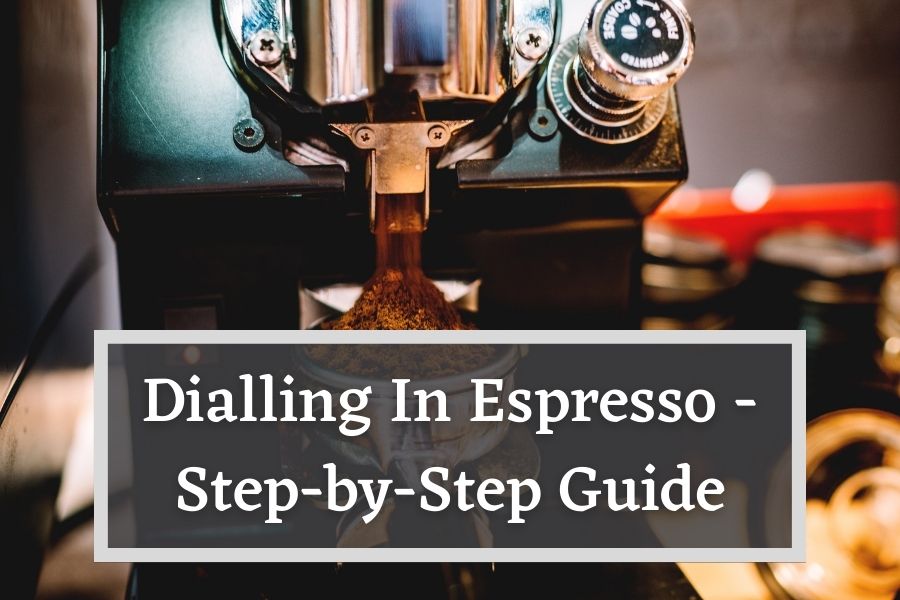
What Is Dialling In Espresso?
Dialling in espresso is the process of adjusting the grind size, dose, tamping pressure and extraction time to achieve the desired flavour profile for your espresso shot.
All of these factors need to be taken into consideration when dialling in espresso. Once you achieve that perfect combination, you’ll be rewarded with a delicious, well-balanced espresso shot.
How to Dial In Espresso?
Before you dive into this guide, remember that dialling espresso is all about trial and error. Don’t be afraid to experiment, and don’t get discouraged if your first few shots don’t turn out perfectly.
With practice patience, and these tips, you’ll be dialling in shots like a pro in no time.
Start with Fresh Coffee Beans
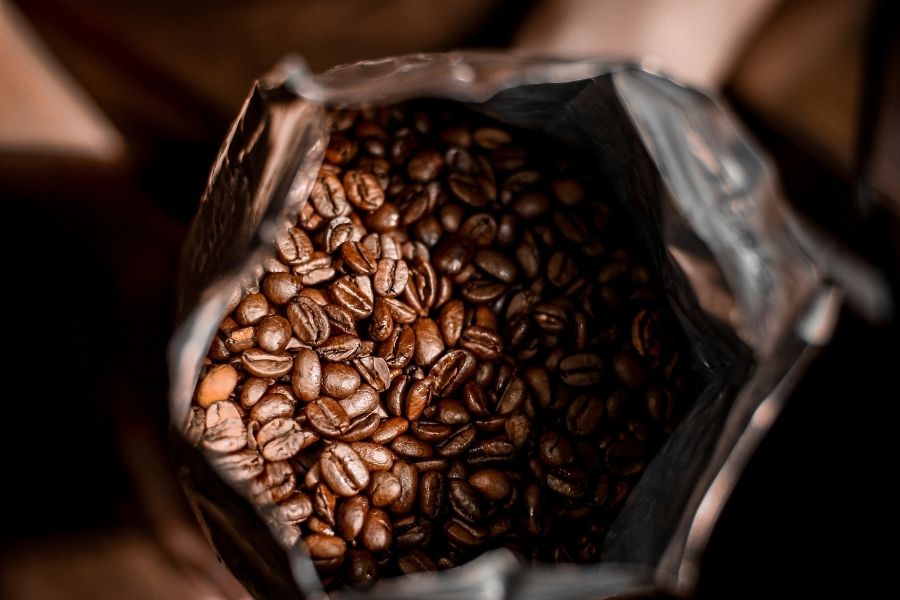
First and foremost, you have to use the fresh coffee beans every time. None of the tips below this one will help you if you use old and stale coffee beans.
Why, you may ask? Well, coffee is a perishable product. Once the beans are roasted, they begin to degas, releasing carbon dioxide. This is a sign that the beans are fresh and full of flavour.
However, as time goes by, the carbon dioxide slowly dissipates, and oxygen starts to seep in, causing the beans to go stale.
Using old beans can result in a flat-tasting espresso that lacks the depth and complexity of flavours that fresh beans provide. You might even notice some sour or rancid notes in your espresso, which is a clear sign that the beans are past their prime.
Additionally, using old beans can make it challenging to dial in your espresso shot properly. The beans might be too dry or too brittle, making it difficult to achieve the right grind size or tamp pressure.
Ultimately, this can lead to inconsistent or even bad shots, wasting both time and money.
Set the Correct Grind Size
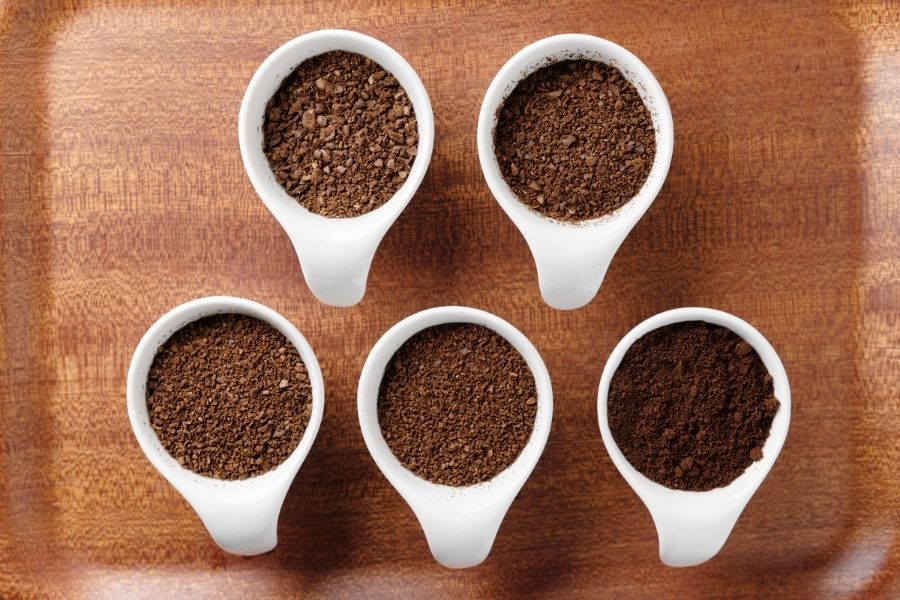
When it comes to dialling in espresso, setting the correct grind size is key. If you use a grind that’s too coarse, the water will pass through too quickly and you’ll end up with a weak, under-extracted shot.
On the other hand, if your grind is too fine, the water will have a hard time passing through and you’ll end up with a bitter, over-extracted mess.
But why does the grind size matter so much? Well, it all comes down to extraction.
When you brew espresso, you want the hot water to extract the flavours and aromas from the coffee beans. But if the water doesn’t have enough contact time with the beans, you won’t get the full range of flavours. If it has too much contact time, you’ll end up with an unpleasant, bitter taste.
As a general rule, finer grinds work best for lighter roasts, while darker roasts need a coarser grind. This is because darker roasts have more soluble compounds that extract more easily, so a finer grind would over-extract them and result in a bitter taste.
On the other hand, lighter roasts have fewer soluble compounds, so a finer grind helps to extract more flavour.
Of course, the exact grind size will vary depending on your machine and the specific beans you’re using. It’s important to experiment and adjust your grind until you find the sweet spot that produces a balanced, flavorful shot.
Tips for dialling in the grind size:
- If your shot is pulling too fast (under-extracted), resulting in a sour taste, make your grind finer.
- If your shot is pulling too slowly (over-extracted), resulting in a bitter taste, make your grind coarser.
Measure the Right Dose of Coffee

A single shot of espresso typically requires around 7 to 9 grams of coffee grounds, whereas a double shot needs about twice as much, or 14 to 18 grams.
When dialling in your espresso, it’s crucial to find the correct dose for your particular machine and beans, as this can affect the taste and quality of your drink.
For example, if you use too little coffee, the shot will be weak and watery, while using too much can result in an overly bitter and intense flavour.
But it’s not just about taste – measuring the right dose of coffee also affects the consistency and quality of your shots. If you’re using different amounts of coffee each time, you’ll have a harder time achieving consistency in your shots and it will be difficult to replicate your desired taste and texture.
To measure the right dose of coffee, you can use a scale to weigh out your grounds precisely. Some baristas even use a dosing funnel to ensure the coffee lands in the portafilter basket evenly.
Tips for dialling in the dose:
- If your shot is too weak and sour, increase the dose.
- If your shot is too strong and bitter, decrease the dose.
Apply the Correct Tamping Technique
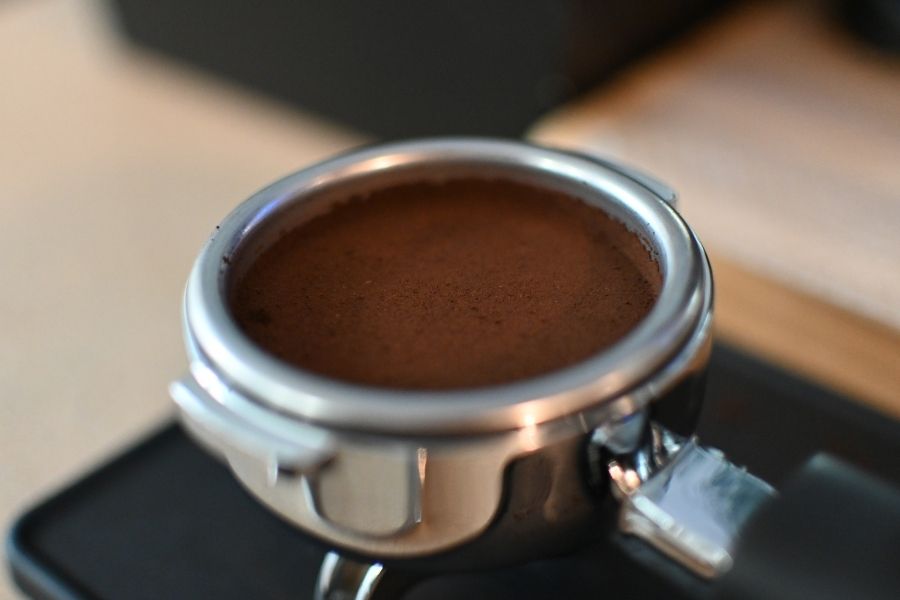
When dialling in espresso, it’s crucial to apply a consistent tamping technique to ensure an even extraction of your coffee grounds. This means that you need to press down firmly and evenly on the coffee grounds in the portafilter.
When tamping, make sure that you compress the coffee evenly throughout the entire basket, and don’t leave any voids or gaps. The aim here is to create a firm, level surface, which will help the water to flow evenly through the coffee grounds.
To check if you’re applying the correct tamping pressure, you can do a simple test. After you pull your espresso shot, look at the puck (the coffee that’s leftover in the portafilter).
Tips for dialling in tamping:
- If the puck is even and has a smooth surface, then you’ve applied the correct tamping pressure.
- If the puck looks like there are areas that have been under-extracted and areas that have been over-extracted, then you need to adjust your tamping technique.
Aim For the Right Extraction Time
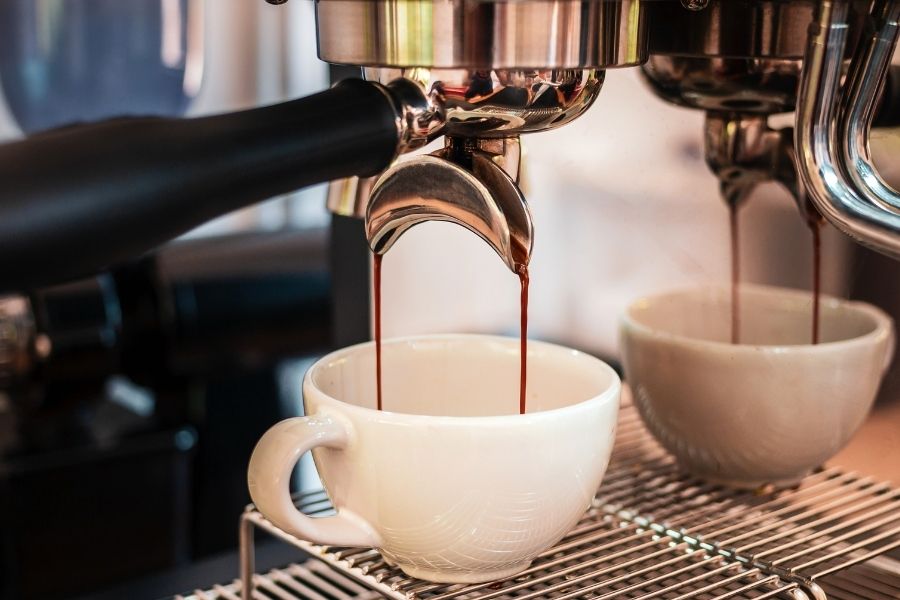
It is extremely important to aim for the right extraction time when dialling in espresso because it directly affects the taste and quality of the coffee. Extraction time refers to the amount of time it takes for water to pass through the espresso grounds and extract flavours, oils, and compounds.
If the extraction time is too short, the coffee will taste weak and acidic. This means that not enough flavours and compounds were extracted from the grounds.
On the other hand, if the extraction time is too long, the coffee will taste bitter and over-extracted. This means that too much was extracted from the grounds, including bitter compounds that affect the taste.
Aim for an extraction time of around 25-30 seconds because this is the optimal range for extracting the perfect amount of flavours and compounds.
This time includes a pre-infusion phase, where water is introduced slowly before full pressure. The pre-infusion phase is crucial because it allows for a more even extraction of flavours and compounds from the grounds.
Additionally, the right extraction time depends on other factors such as grind size, the amount of coffee used, and even the espresso machine. For the best results, I recommend investing in a prosumer espresso machine.
Tips for dialling in extraction time:
- If your shot is extracting too quickly, resulting in an under-extracted shot, try a finer grind, a higher dose, or tamping harder.
- If your shot is extracting too slowly, resulting in an over-extracted shot, try a coarser grind, a lower dose, or tamping with less pressure.
Taste and Adjust

Tasting and adjusting your espresso shot is an essential part of dialling in your espresso machine. There are several reasons why this is important.
For one, espresso is a very complex drink with many different flavour notes. By tasting your shot, you can pick up on any imbalances or inconsistencies in the flavour profile. This will allow you to make the necessary adjustments to achieve a more well-rounded and balanced shot.
Over time, tasting and adjusting your espresso can also help you improve your brewing skills. By paying careful attention to the taste of your shot, you’ll start to develop a better understanding of how different variables impact the flavour, aroma, and overall quality of the espresso.
This knowledge will not only make you a better barista, but it will also enable you to make more informed decisions about the coffee you use and how you brew it.
Keep in mind that the key thing when adjusting the espresso shot is to adjust one parameter at a time! So if you change the grind size, leave all other parameters in place.
Keep Notes
While experienced baristas might be able to dial in a shot with just a few adjustments, the truth is that it can take a lot of trial and error to get it just right.
That’s where keeping notes comes in handy. By tracking your adjustments over time, you can start to see patterns and trends emerge.
Maybe you notice that certain beans are more forgiving when it comes to grinding size, or that changing the brew time by just a second or two can make a big difference in the flavour profile.
Keeping notes also helps you remember what worked and what didn’t for specific coffee beans. That way, the next time you get a new bag of beans, you won’t have to start from scratch – you can refer back to your notes and use them as a starting point for dialling in the shot.
Dialling In Espresso – Conclusion
Dialling in espresso can be daunting at first. By following the 7-step process outlined here, you will be on your way to achieving perfect espresso with balanced sweetness and flavour each time.
Remember, don’t get discouraged if you don’t make it on the first try. Implement the tips and advice from this blog post as many times as needed until you get it right!
And while you are here, why not learn how to use an espresso machine properly? Learning this too may help you to achieve that perfect espresso shot every single time.
